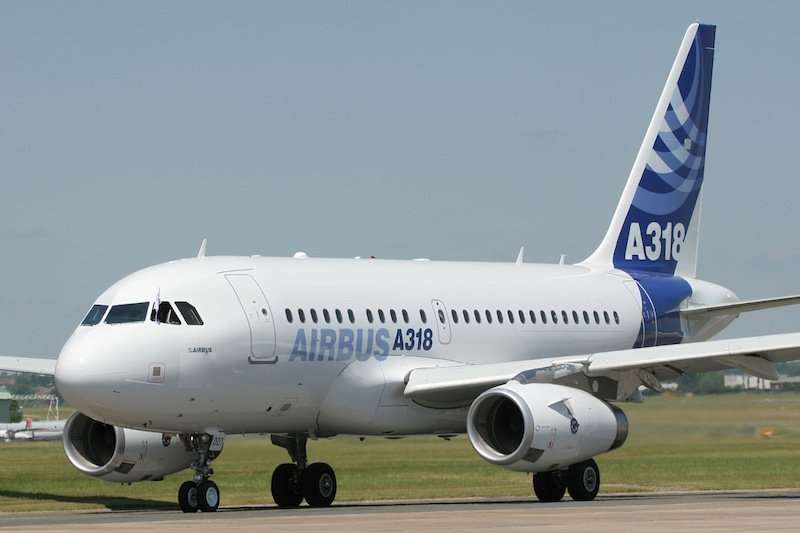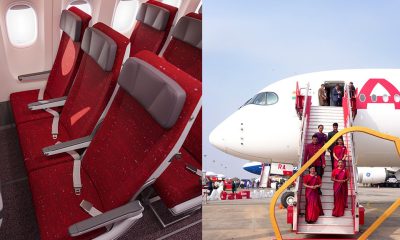Aerospace
New Airbus aircraft list prices for 2016..!
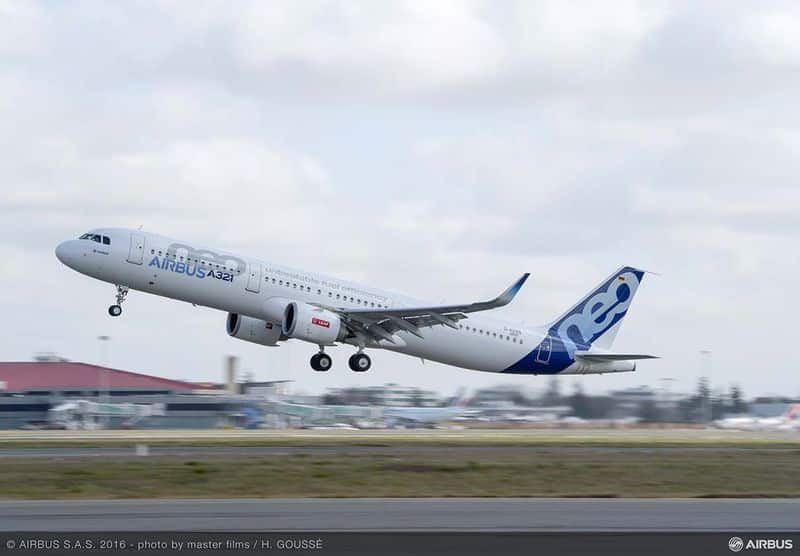
Price adjustment for Airbus’ modern, fuel-efficient aircraft Family . Airbus has increased the average list prices of its aircraft by 1.1 per cent across the product line. The new pricing is effective from January 1st 2016. The 1.1 per cent price increase has been calculated according to Airbus’ standard escalation formula over the January 2015 to January 2016 period and takes into account the drop in materials and commodities prices.
“Our new 2016 price increase reflects the strong appetite from customers around the globe for Airbus’ comprehensive, modern and innovative product range,” said John Leahy, Airbus Chief Operating Officer, Customers. “We see demand for our aircraft continuing to grow across all size categories as our reliable, efficient product line enables customers to grow their businesses profitably as well as being favoured by passengers who want to travel in the most comfortable cabins.”
Airbus delivers its first aircraft produced in the USA.(Opens in a new browser tab)
Airbus is the world’s leading aircraft manufacturer of passenger airliners, ranging in capacity from 100 to more than 500 seats. Airbus champions innovative technologies and offers some of the world’s most fuel efficient and quiet aircraft. Airbus has sold more than 16,300 aircraft to more than 380 customers worldwide. Of these, more than 9,500 aircraft have been delivered.
* * *
AIRBUS AIRCRAFT
2016 AVERAGE LIST PRICES (millions of US$)
A318 family
A318 – Price : $75.1 millions
- The Airbus A318 is the smallest member of the Airbus A320 family of short- to medium-range, narrow-body, commercial passenger twin-engine jet airliners manufactured by Airbus
- The A318 carries up to 132 passengers and has a maximum range of 3,100 nmi (5,700 km; 3,600 mi)
A319 Family
A319 : Price : 89.6 millions
A319neo : Price : $ 98.5 Millions

- As a shortened-fuselage version of Airbus’ A320 cornerstone single-aisle jetliner, the A319 continues to prove its versatility – enabling carriers around the world to benefit from the aircraft’s range options and seat layout versatility.
- n addition to the standard A319 124-seat configuration, Airbus offers an option with a seating capacity of up to 156 passengers – a version that is being ordered by an increasing number of low-cost airlines.
A320 Family
A320 : Price – $ 98.0 millions
A320neo : Price – 107.3 Milions

- The A320s are also named A320ceo (current engine option) after the introduction of the A320neo.
- The aircraft family can accommodate up to 220 passengers and has a range of 3,100 to 12,000 km (1,700 to 6,500 nmi), depending on model
- The A320 family pioneered the use of digital fly-by-wire flight control systems, as well as side-stick controls, in commercial aircraft. There has been a continuous improvement process since introduction.
A321
A321 : Price – $ 114.9 Millions
A321neo : Price – 125.7 Milions

- This aircraft has a stretched fuselage with an overall length of 44.51 metres, along with an extended operating range of up to 3,000 nautical miles while carrying a maximum passenger payload
- The twin-engine A321 can be powered by either of two engine options: the CFM International CFM56 or International Aero Engines’ V2500. With a range of up to 4,000nm /7,400km., the A321 is capable of flying longer routes,
- The A321 typically accommodates 185 passengers in a two-class configuration (16 in business class and 169 in economy)
A330 family
A330-200 : $ 231.5 Millions
A330-800neo : $ 252.3 Millions
A330-200 Freighter : $ 234.7 Millions
A330-300 : $ 256.4 Millions
A330-900neo : $ 287.7 Millions

- A330 have a range of 5,600 to 13,430 kilometres (3,020 to 7,250 nmi; 3,480 to 8,350 mi) and can accommodate up to 335 passengers in a two-class layout or carry 70 tonnes (154,000 lb) of cargo.
- The A330-200 is a shortened, longer-range variant, which entered service in 1998 with Korean Air. Typical range with 253 passengers in a three-class configuration is 13,400 km (7,240 nmi; 8,330 mi). The A330-200 is ten fuselage frames shorter than the original −300, with a length of 58.82 m (193 ft 0 in)
- The A330-300 is based on a stretched A300 fuselage 63.69 m (208 ft 11 in) long but with new wings, stabilisers and fly-by-wire systems. The −300 carries 295 passengers in a three-class cabin layout, 335 in two-class, or up to 440 in an all-economy layout. It has a range of 10,500 km (5,670 nmi; 6,520 mi). It has a large cargo capacity
A350 Family
A350-800 : $ 272.4 Millions
A350-900 : $ 308.1 Millions
A350-1000 : $ 355.7 Millions


- The A350 is the first Airbus with both fuselage and wing structures made primarily of carbon-fibre-reinforced polymer. Its variants seat 280 to 366 passengers in typical three-class seating layouts.[10] The A350 is positioned to succeed the A330 and A340, and compete with Boeing’s 787 and 777.
- The A350-800 is to seat 270 passengers in a three-class configuration with a 9-abreast seating, and have a range of 15,400 km (8,300 nmi)
- The 268 tons MTOW A350-900 is the first A350 model and typically seats 325 passengers over a 7,590 nmi (14,060 km) range. Airbus says that per seat, the Boeing 777-200ER should have a 16% heavier MWE, a 30% higher block fuel consumption and 25% higher cash operating costs than the A350-900
A380 family
A380-800 : $ 432.6 Millions
Price depends on design weights, engines choice and level of selected customisation.
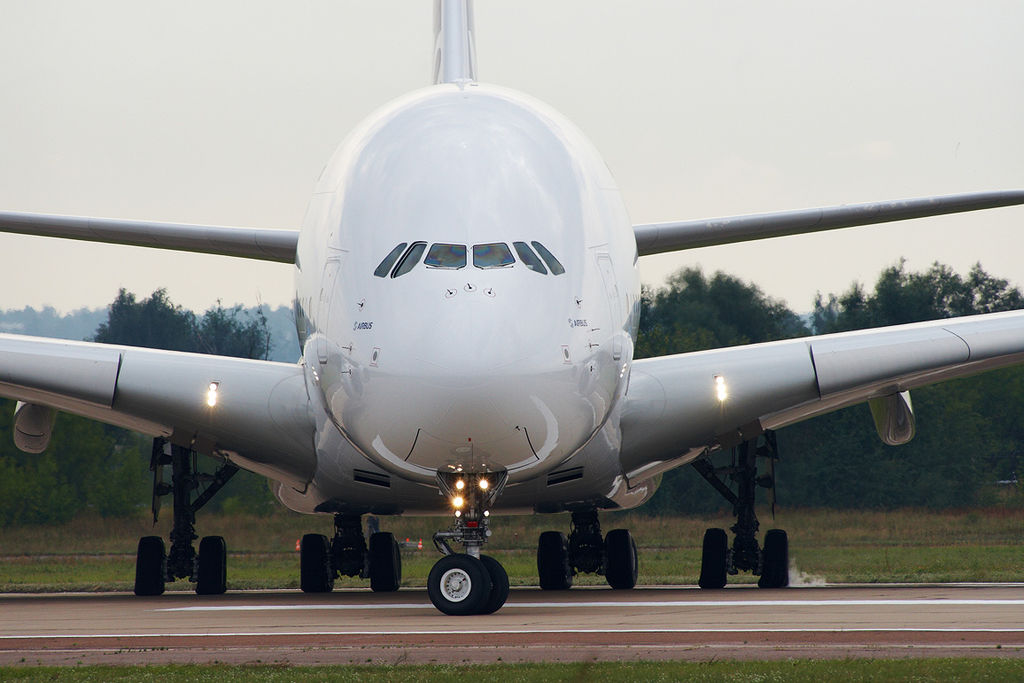
- The A380’s upper deck extends along the entire length of the fuselage, with a width equivalent to a wide-body aircraft. This gives the A380-800’s cabin 550 square metres (5,920 sq ft) of usable floor space,40% more than the next largest airliner, the Boeing 747-8,
- The A380-800 has a design range of 8,500 nautical miles (15,700 km), sufficient to fly nonstop from Dallas, USA to Sydney, Australia, and a cruising speed of Mach 0.85 (about 900 km/h, 560 mph or 490 kn at cruising altitude).
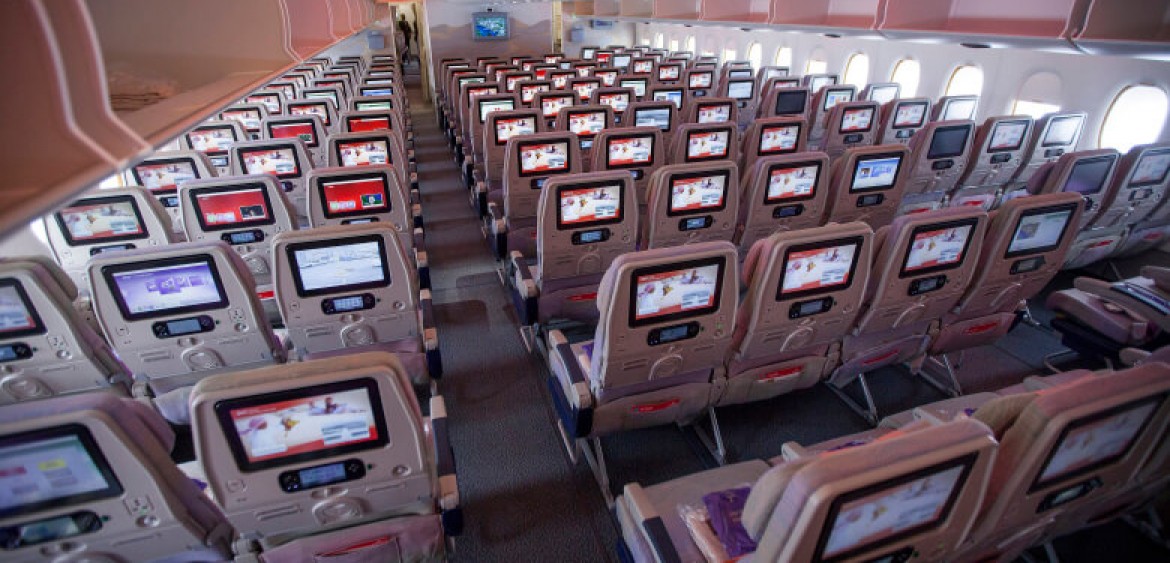

 Liked it ..?
Liked it ..?
Share with your friends and family

Aerospace
China Secures Production Certificate for Mass Production of Pilotless eVTOL Aircraft

The first passenger-carrying pilotless electric vertical takeoff and landing (eVTOL) aircraft in the world, the EH216-S, has received the Production Certificate for its eVTOL aircraft from the Civil Aviation Administration of China (CAAC).
This is a significant milestone for EHang Holdings Limited, the leading UAM technology platform company in the world. This outstanding accomplishment is another big step towards mass manufacturing for the eVTOL aircraft and the ensuing commercial operations, building on the ground-breaking acquisition of the Type Certificate and the Standard Airworthiness Certificate for the EH216-S.
The PC is a crucial certificate that the aircraft maker receives from the CAAC, the country’s aviation authority. By obtaining this certificate, EHang has demonstrated that it has set up a quality management system for mass production that satisfies the airworthiness regulation standards set forth by the CAAC, and the company has been given permission to continue producing mass quantities.
It is also a strong guarantee of the calibre of the goods made by EHang. Raw materials, supplier management, manufacturing organisation, production quality control, aircraft pre-delivery test, after-sales repair and maintenance, etc. are all included in the mass production quality management system for the EH216-S.
To ensure that every aircraft and its components that roll off the production line strictly adhere to the approved type design and safety requirements, the system sets clear guidelines and documentation for every step in the production procedure. This ensures comprehensive traceability and safety control.
Aerospace
Four Airbus A380 Superjumbos lined up to be scrapped

In a strategic move aimed at reclaiming valuable resources from the iconic Airbus A380 aircraft, VAS Aero Services and Dr. Peters Group have announced a significant collaboration.
This partnership marks a milestone in aviation logistics and aftermarket services, with four of these colossal planes slated for teardown and redistribution of used serviceable material (USM).
The venture between VAS Aero Services, renowned for its expertise in aircraft dismantlement, and Dr. Peters Group, a prominent Germany-based investment fund management firm, underscores a commitment to sustainable aviation practices. This isn’t their first foray into scrapping A380s; their successful partnership has already seen the dismantlement of these aircraft, making them pioneers in this niche.
Under the agreement, the latest consignment brings the tally to eight A380s entrusted to VAS by Dr. Peters Group. Managing Director Christian Mailly of Dr. Peters Group emphasized the trust placed in VAS, citing their unparalleled capabilities in dismantlement and aftermarket sales network. It’s a strategic move in response to the growing demand for quality USM parts, particularly with the resurgence in reliance on the A380.
Notably, the teardown process will be carried out at various locations, optimizing the positioning of harvested parts to cater to different markets. While some parts will be positioned in Europe to support operators in the region and the Middle East, others will remain in the Asia-Pacific region. This meticulous strategy ensures efficient access to spare parts, benefiting MROs and airlines across these markets.
The decision to retire these A380s comes at a time when operators are reassessing fleet strategies amidst evolving market dynamics. Despite initial plans for quick retirement due to the emergence of more fuel-efficient alternatives, factors such as a rebound in long-haul demand and delays in new widebody deliveries have prompted operators to reconsider. The A380, with its unique capacity and capabilities, presents a practical solution for short-term capacity management.
Aerospace
Rolls-Royce Launches Test Flights for Revolutionary Pearl 10X Engine
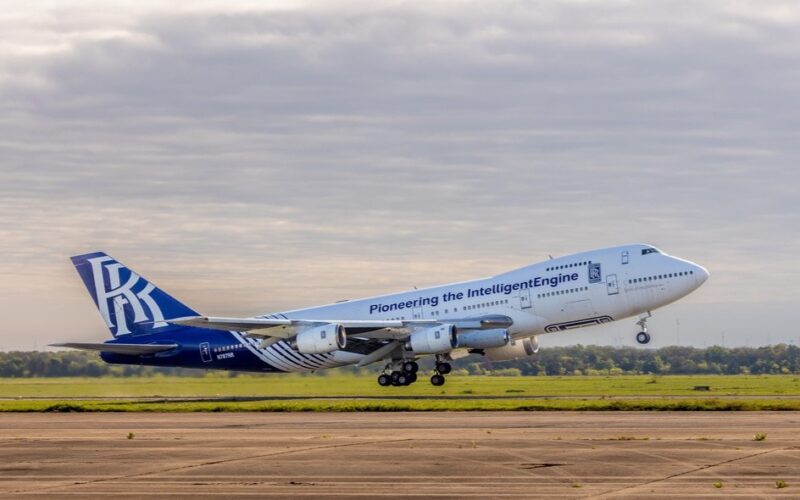
Rolls-Royce reports that the company’s dedicated Boeing 747 flying testbed has seen the successful start of the Pearl 10X, their newest aero engine designed for the business aviation industry.
Dassault, a French aircraft manufacturer, has decided to use this engine only to power their newest flagship, the Falcon 10X. As stated at last year’s Capital Markets Day, the commencement of flight testing represents a significant milestone for both Rolls-Royce and the Pearl 10X programme as the company concentrates on expanding in the business aviation industry.
The first Rolls-Royce engine to power a Dassault business jet is the Pearl 10X, the newest engine in the state-of-the-art Pearl engine family. The Pearl 10X was chosen by the French aircraft manufacturer as their new flagship model, demonstrating even more of Rolls-Royce’s dominance in the business aviation engine market.
Over the next few months, pilots and flight test engineers from Tucson, Arizona, USA, will put the engine through its paces. The flight test programme will comprise testing of the nacelle’s anti-icing system, in-flight relights, engine performance and handling checks at various speeds and altitudes, and fan vibration tests at various altitudes.
The new auxiliary gearbox, which enables higher additional power extraction, and the ultra-low emissions ALM combustor, which is compatible with 100% Sustainable Aviation Fuel (SAF), have undergone extensive testing as part of the ground-based development programme thus far. The engine will be the most potent business aviation engine in the Rolls-Royce lineup. It exceeded its intended thrust levels during the very first test run. With over 2,300 testing hours successfully completed on the Pearl 10X engine configuration as well as the Advance 2 demonstration, the programme is moving forward at a rapid pace.
With the most economical engine core available for business aircraft, the Advance2 engine, coupled with a high-performance low-pressure system, gives the Pearl 10X an exceptional thrust of over 18,000 lbf. With a 5% increase in economy over the previous generation of Rolls-Royce commercial aviation engines, the Pearl 10X

